Inventions: Eureka moments that changed our world

Eureka!
Inventors shape the world we live in with their scientific discoveries and technological innovations.
Over the last century they have transformed our lives with inventions ranging from the humble windscreen wiper and lawn mower to ground breaking developments in television, bionics, computing and telecommunications.
Whether the idea was dreamed up in a garden shed or developed in a laboratory, inventors have dared to dream with innovations in transport, aviation, sports, medicine, industry and technology.
But what is the ‘eureka moment’ that turns an idea into a fully-fledged invention?
The art of invention
For a successful invention to become a reality, the ‘big idea’ needs to be practical and achievable. It can't just look great on paper.
England boasts a proud history of inventions from Robert Stephenson's Rocket steam engine to Joseph Swan's incandescent light bulb.
Today's innovators continue to change the way we travel and use technology, from driverless cars and 'talking' tyres to an experimental ‘family scooter’.
On Tyneside inventor Dominic Wilcox has created the world's first fully functional GPS shoes which guide the wearer to any destination using different forms of transport, wherever they are around the globe.
The shoes use an embedded GPS in their heels and mini LED lights in the shoe hole perforations.
Video: Intelligent 'GPS shoes'
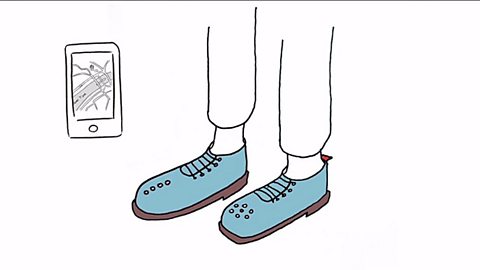
'GPS shoes'
Could 'GPS shoes' be the solution to navigation for walkers?
Another imaginative project being developed in north east England is the 'windowless' plane with a ‘virtual aircraft cabin’ where passengers can enjoy an immersive experience.
Visual projections in the aircraft cabin create entirely new environments from a tropical paradise to a relaxing city cafe. But this futuristic project is still a concept rather than a reality.
The final test will be whether these inventions can be developed as products which are economically viable.
Video: The 'windowless' plane

The aircraft cabin of the future
Look inside the aircraft cabin of the future.
Standing the test of time
The greatest inventions stand the test of time and often have a long gestation period, marked by subtle developments and modifications over many years.
One such invention is the electric car which was pioneered over 100 years ago by Thomas Parker in the West Midlands.
He tested the first practical electric car in 1884 in Wolverhampton and even used the car for work, making him the world’s first electric car commuter.
Video: The electric car
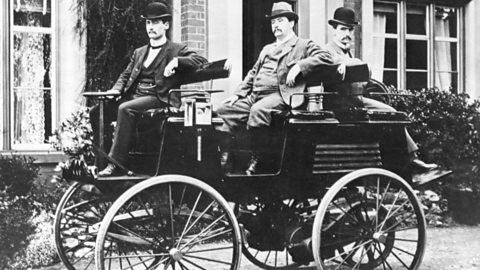
'First' Victorian electric car commute
The electric car driven to work by a Victorian inventor
Today the modern electric car has become a feature of the UK’s roads whilst the new driverless car could soon become a reality.
The Midlands has a strong industrial and automobile history so it is no surprise that it has become the hotbed for trialling technology that might get us from A to B quicker and safer.
A government funded project is using 40 miles of roads around Coventry to test the latest in 'intelligent transportation' using an environmental simulator.
Video: The driverless car of the future
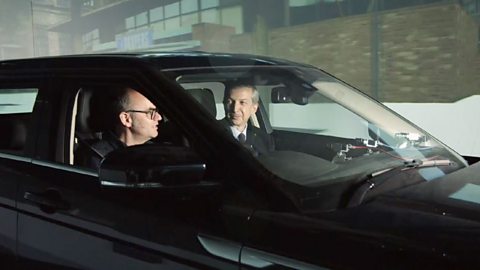
Take a drive on the simulator for 'intelligent' cars.
Inside the driverless car of the future
'Blue sky' thinking
The defence industry has been at the centre of military innovations including steam powered submarines, pilotless aircraft and aerial surveillance.
The Second World War was a focal point for new inventions including a special part for Spitfire planes which prevented the aircraft from nose-diving.
The invention was developed by Beatrice Shilling, the pioneering engineer from Manchester, who was in many ways ahead of her time.

Modern defence inventions have often helped other industries to adapt military hardware for very different uses.
Drones and pilotless aircraft were originally built for military surveillance and warfare but today's drones are adopting new roles.
The environmental enforcement 'sniffer' drone, which looks like a miniature helicopter, can hover over shipping to ‘sniff out’ and identify high pollution levels.
In the future this drone has the potential to be used for detecting people lost at sea and in border control operations.
Another drone development in Yorkshire has humans, drones and robots working together to repair potholes in roads and fix water pipes.
Video: The 'sniffer' drone in action
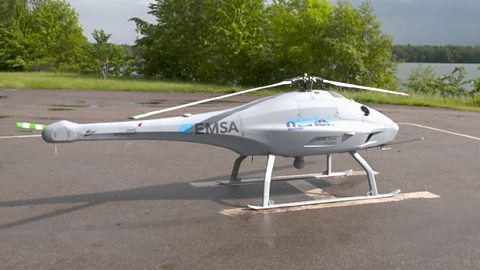
The 'sniffer' drone helicopter
Marty Jopson watches the futuristic 'sniffer drone' on a test run.
'Necessity' - the mother of invention
'Necessity is the mother of invention' and often drives innovation in response to a problem or crisis.
Michael Pritchard from Essex is a good example of how inventors can turn their hands to practical solutions to the world's problems.
He has developed a filtration device which makes dirty water safe to drink in developing countries and regions hit by severe flooding.
Initially Michael tried the device out on his family and boasts that he can make filthy water with dog poo turn into clean drinking water.
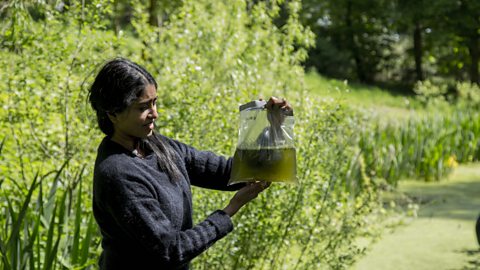
How do you make filthy water drinkable?
Discover how to make filthy water drinkable.
Sporting innovations
Sport is an area where inventions can create a competitive edge for world class performers.
Space age technology developed by NASA and Speedo is being used to propel swimmers to victory with a hi-tech fabric which reduces the drag caused by the friction of skin on water.
Inventions are also making an important contribution to making sport safer with developments in clothing and kit.
Aeronautical engineer Dr Angelo Grubisic from Southampton University is developing the world’s first scientifically engineered wingsuit for human flyers using 3-D geometry.
He developed his invention after discovering the shocking number of fatalities in ‘wingsuiting’ sport.
His ground-breaking Icarus project team also hopes the suit will help break world records as well as improving safety.
Video: A 'safer' wingsuit
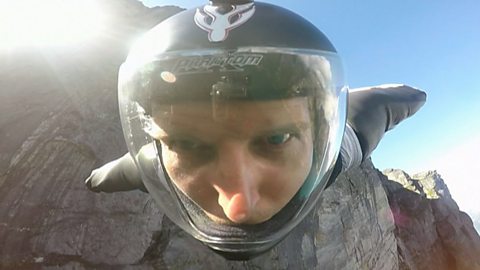
Wingsuit technology
Dr Angelo Grubisic is using technology to make wingsuits safer
The Wingsuit
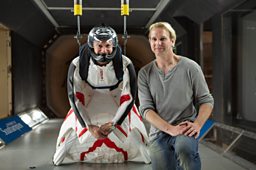
Revolution in communications
One of the biggest revolutions in the world of inventions has been in television and telecommunications.
South East England has been at the forefront of many of these developments including television, online shopping and the three-dimensional experience of virtual reality.
It was in Hastings that John Logie Baird’s experiments laid the groundwork for the development of modern television.
The first experiments in computer shopping took place in southern England in 1984.
Michael Aldrich connected a modified domestic television via a telephone line to a real- time, multi-user transaction processing computer.
A Tyneside woman called Mrs Snowball trialled this Videotex system to order her food shopping from Tescos using her TV remote control.
Video: The birth of 'online shopping'
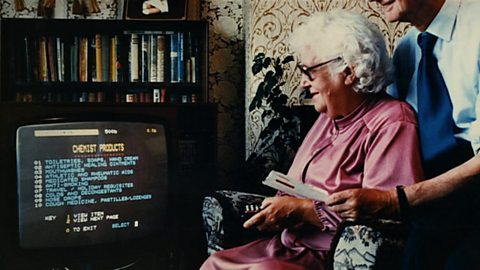
The world's first 'online shopper'
The world's first 'online shopper' c/o Getty Images/ITN News
Cornwall has also been a major hub of innovation from Marconi and the invention of the telegram to telecommunications that have made instant communication across vast distances possible.
At Goonhilly in Cornwall new developments include a warehouse which lies at the heart of the global internet revolution.
It is at the cross roads for international data - where ¼ of the global internet data is sent and received – using the fastest cable in the world.
Video: Inside the hub for the global internet
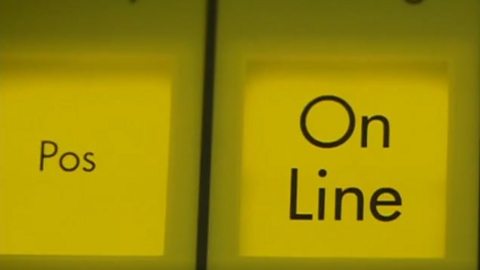
Cornwall has become the hub for the global internet revolution.
Why Cornwall is the hub for the global internet.
Pioneering spirit
Inventors have one thing in common - a pioneering spirit – but they also need the tenacity to see their ideas from the drawing board to the production line.
Modern computing inventors often start their journey at universities or as 'bedroom hackers'.
‘Hackathons’ for software developers and coders have become a popular way of finding the next big idea, from new APPS or gadgets that enable your phone to communicate with your home.
Technical detail and execution are key factors in success or failure of any invention.
Inventors also need to be resilient when their ideas are challenged.
Video: The 'rollercoaster ride' of invention
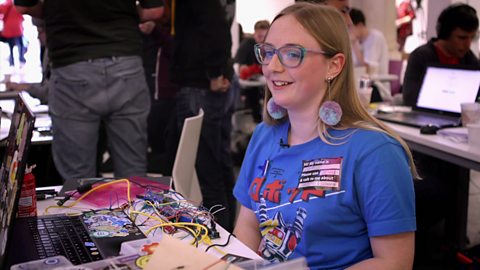
The 'rollercoaster ride' of invention
A young computer hacker explains why invention can be an emotional rollercoaster.
Marrying man and machine
Inventions are increasingly being used to give people with disabilities a better quality of life.
Gary Lambert from southern England has invented a device designed to enable his daughter Natasha to go sailing using ‘sip and puff’ controls.
This ingenious piece of technology allows Natasha, who has cerebral palsy, to control the sails and rudder of her boat.
Using this invention, Natasha has been able to sail the English Channel and she’s now developing ambitious plans to tackle longer sailing trips.
Video: Sailing by breath control
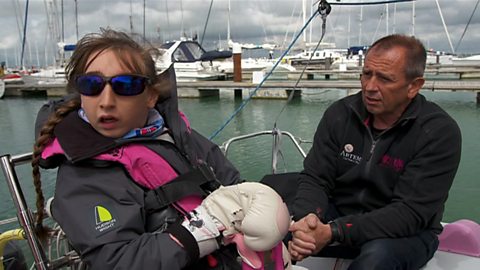
Invented in the South: Miss Isle
Determination and ingenious invention fulfilling a 19-year-old's sporting dreams.
Prosthetics is a huge area for breakthrough medical inventions including the latest in 3D-printed bionics.
Open Bionics in the West Country has been developing bionic limbs which not only look more realistic but have a better range of movement.
The company aims to make bionic hands that are easier to use and can be made more affordable.
The bionic hands can also be modified with designs for different activities using 3D printing.
Video: The bionic hand
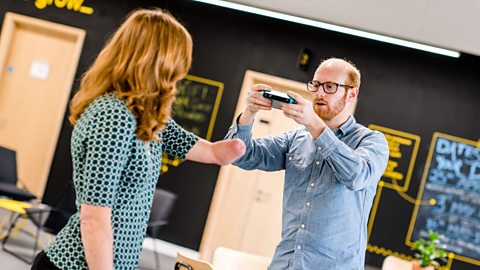
A new generation of prosthetic limbs
Paralympic swimmer Kate Grey looks at the new generation of prosthetic limbs.
A tradition of invention - ‘intelligent textiles’
Gone are the days when textiles were purely for wearing and keeping warm. Cloth is now being used in medicine, industry and sport to change our lives for the better.
The East Midlands has been at the heart of the textile revolution for centuries and continues to be a hub of innovation. It demonstrates how invention can be routed in traditional expertise in a specialist field.
‘Intelligent fabrics’ are being used by a team in Nottingham in rebuilding injured bodies.
Smart textiles are also being employed to measure body functions such as heart rates to prevent drivers from falling asleep at the wheels of their cars.
The project is being developed by Tilak Dias, 'professor of knitting' at Nottingham Trent University, who has discovered a way to embed electronic components into yarn.
Video: 'Intelligent fabrics'
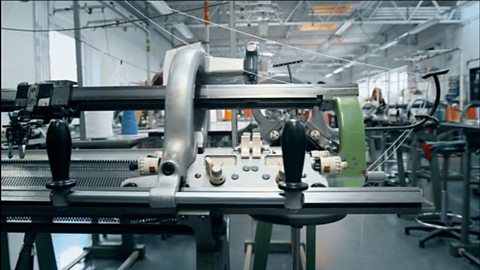
The revolution in 'smart fabrics'
Maggie Aderin-Pocock finds out how cloth is being used to change our lives for the better.
'Big' ideas and visions
An inventor needs a big vision which can sometimes defy belief because it seems far-fetched. Many inventors have been dubbed 'eccentrics' but often turn out to be way ahead of their time.
DIY inventor Tom Bagnall from Yorkshire has developed a jet-powered mobility scooter which can go at speeds of up to 120mph.
He encapsulates the spirit of invention which has led to many new innovations, sometimes building on eccentric prototypes.
Video: Jet powered mobility scooter
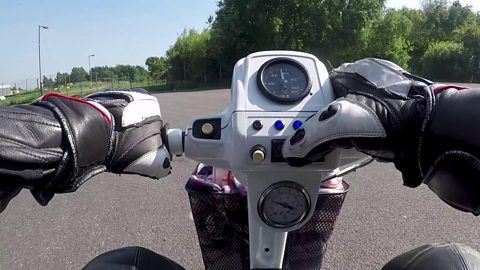
Jet powered mobility scooter
The jet powered mobility scooter.
Inventors need to take risks and try out different solutions, often adapting and modifying their original big idea.
Inventor Andrew Turner develops hundreds of prototypes of his inventions in a humble garden shed in County Durham.
His latest invention is the illuminated lollipop stick designed to help in road safety. His 'eureka' moment came when he saw a near-miss at a school crossing and it's about to become a reality thanks to a lot of blood, sweat and tears.
Video: The garden shed inventor
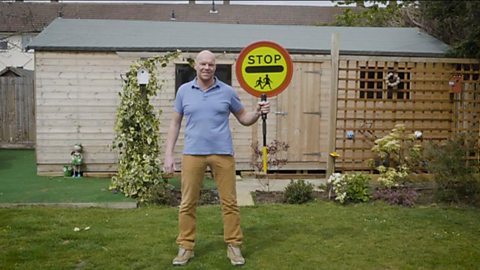
The illuminated lollipop stick
The illuminated lollipop stick is a new invention from Andrew Turner.
About Invented in England
Invented in England celebrates the inventions that have changed our daily lives on Friday June 23 at 19:30 on �������� One England and for 30 days thereafter on the iPlayer.
The 11 regional TV programmes are part of the season.
Join the conversation on using the hashtag #invention
